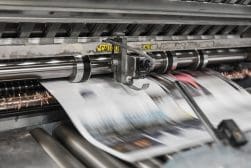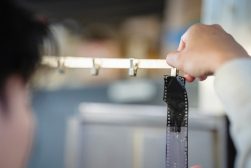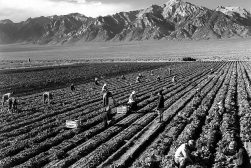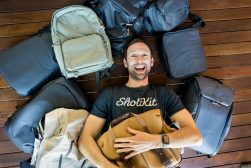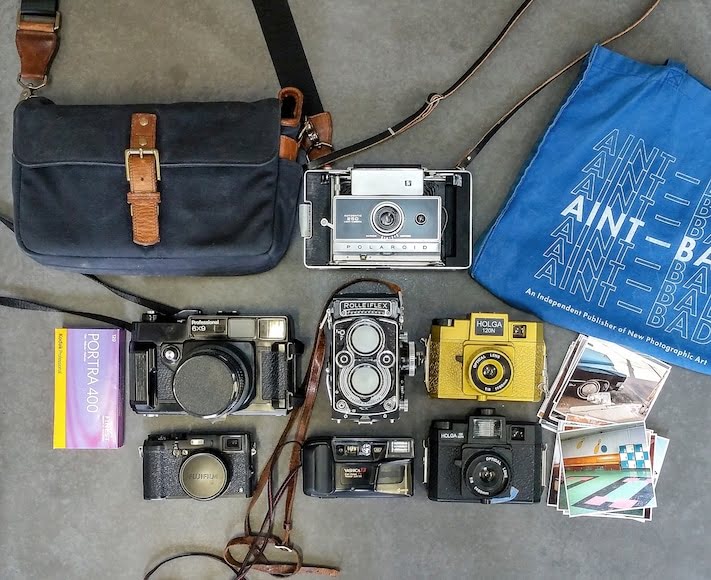
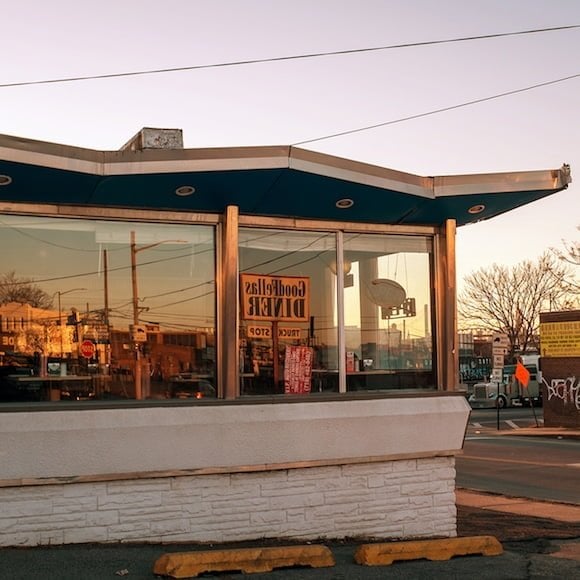

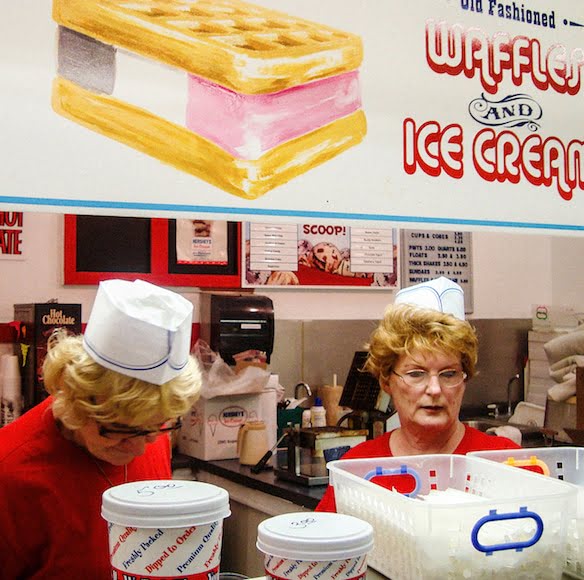
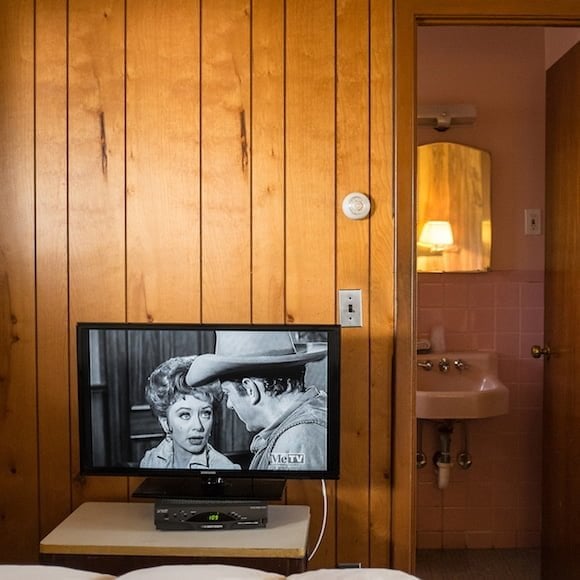
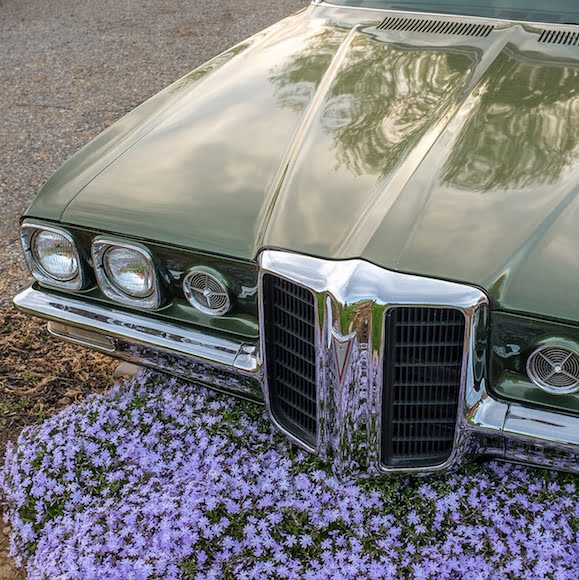
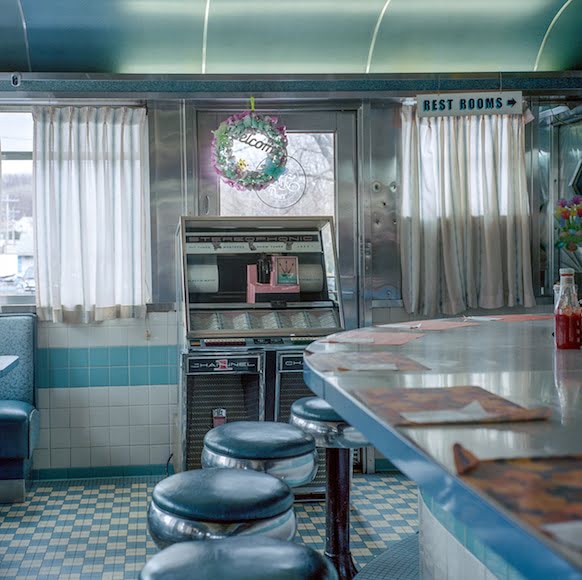
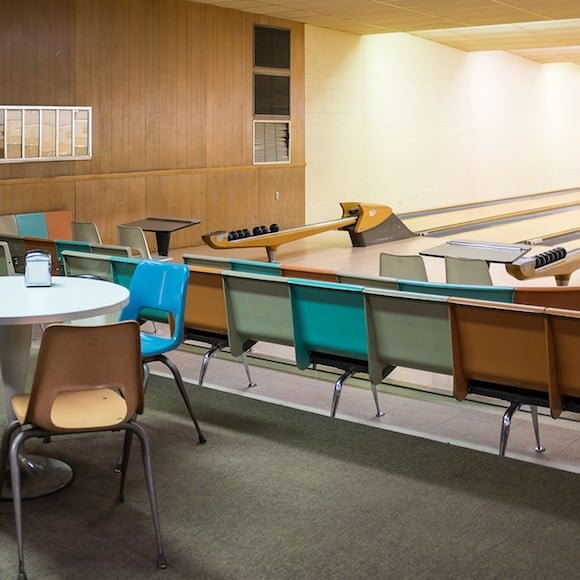
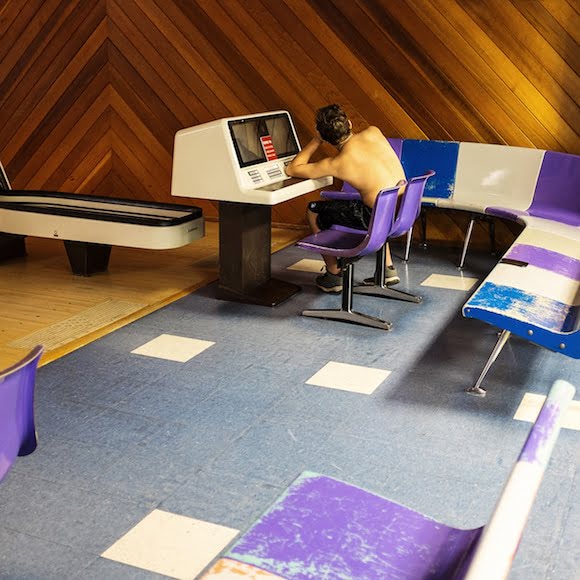
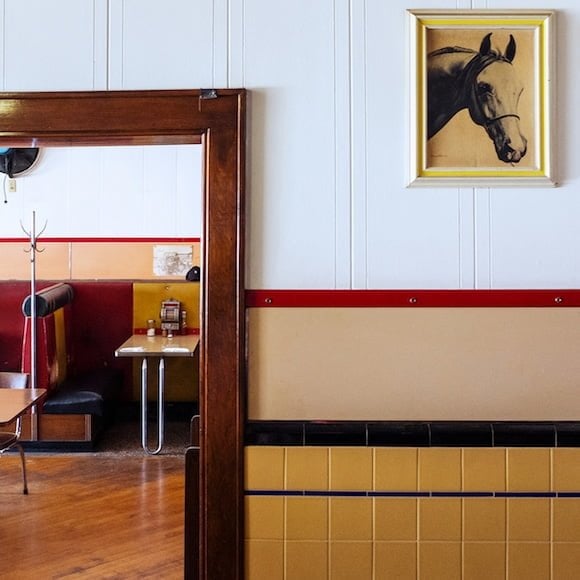
Leah Frances
Lifestyle | Last Updated: July 26, 2021
Hi! My name is Leah Frances. I’m the eye behind American Squares, an Instagram photography project that documents American cultural relics, iconography and identity. I was born on Cormorant Island and grew up on Vancouver Island, Canada.
My early proximity to the USA (you can pick up an American mobile signal from the end of my childhood street) along with a steady diet of mid-century American cinema informed my abiding interest in notions surrounding American identity—its roots, and its perceptions within a culture and across time.
I recently moved to Pennsylvania from Brooklyn, NY and I spend a lot of my time driving and photographing here. Almost in an archaeological sense, I search out and make pictures of items that I see as the “most” American in an attempt to engage in the distance between ideas of “Americanness” handed down through television, films, books and magazines and the actual reality of daily life.
My gear is fairly minimal. I’m only beginning to shoot on assignment so up until now, I’ve made photographs in my own way and on my own time and thus haven’t had a need for a lot of equipment.
I shoot in natural light with fixed lenses. I’ve put my Fujifilm X100S through its paces — I’ve taken so many pictures with it that the counter is going around for a second time. I have several fixed-lens cameras but for my present work, because I am shooting in square format, I mainly choose between two: the Fuji digital camera (which I set to an aspect ratio of 1:1 for composition purposes) and a Rolleiflex 3.5F
.
I’ll use film, specifically Kodak Portra, in any situation that I can but if I’m making a photograph of people on the fly, the Fuji is a little bit easier. In general though, I do try to use the Rollei because I know I can print basically as large as I want. I dream of upgrading to the Fujifilm GFX 50R
so I won’t be held back by print size in digital either.
I decided on fixed lenses because I personally find (or hope) that “zooming with my feet” lends a sense of immediacy to my work. The viewer has the exact vantage point of where I was standing when I made the picture.
I always compose in camera; I don’t crop, or crop very minimally, after the fact. I also don’t use a flash because I love natural light and, shooting my own personal work, I have the advantage of planning for and waiting for the light I want.
I do enjoy some photographers that take full advantage of flash, I just wasn’t drawn to making those pictures for myself, at least not yet.
This September, I’m beginning an MFA in Photography at The Tyler School of Art which is part of Temple University in Philadelphia. I’m really excited to shake things up: to learn historical processes, to have the use of a large format camera, and Tyler even allows you to study across disciplines so I am very much hoping to learn about neon in their Glass Program.
Another exciting development on the horizon is that I am publishing a book with Aint-Bad, An Independent Publisher of New Photographic Art, which should be released in October. I’m editing and sequencing it right now and I’m excited for you to see it!
My main cameras are:
Fujifilm X100S
This is the camera I bought when I got back into photography as an adult, around 2013, and I am still using it which goes to show how tough it is!
One reason I love it is because it’s small. As they say, the best camera is the one you have with you. Also, it’s funny but because it has a smaller (16.3MP) sensor than the new Fujis (26.1MP), I’m able to get a wider depth of field in low light, or when shooting indoors without a tripod. I enjoy that quirk, so even if I am able to upgrade, I will definitely continue to use the X100S until it stops working, for certain situations.
I also love it because, by this point, I know it inside and out. I always shoot manually and I know what it is going to do and what situations the 23mm F2 fixed lens will handle best. Interior photography is a love of mine and hand-holding this gets great results in most lighting situations.
Rolleiflex 3.5F
First and foremost, I love the act of making a photograph with this camera. Looking through the ground glass into that glowing square is a kind of pure magic that enhances the elation I already feel while out photographing the world.
On top of that, the Xenotar 75mm f/3.5 lens is special: sharp, but not overly so, it has a kind of dreamy atmospheric quality that’s hard to describe.
The Rollei is also surprisingly small and very light with a near-silent shutter which makes it more stealthy than one might expect. I also find the TLR focussing system forces me to slow down and really concentrate. With this camera I usually only take one picture of any scene I’m hoping to capture.
Other gear:
Fujica GW690
Otherwise known as the “Texas Leica” or “the brick”, this leaf-shutter fixed-lens rangefinder camera has a certain heft that’s fun to hold and use.
I bought it because I read Mark Steinmetz uses it (one of my favorite photographers) and I had never seen anyone capture light as beautifully as he does. The EBC Fujinon 90mm f/3.5 lens is tack sharp, like nothing else I’d experienced previously.
When I got my first roll of film developed I was blown away. I had practiced using the rangefinder focussing system on a peacock and I had never seen as much detail on them with my naked eye.
Right now I’m not using this camera as much, because I’m not shooting in 2:3 format but I will in the future. Bonus: the 6×9 negatives are, I believe, some of the largest medium format negs around.
Yashica T3
This is my fun camera for parties or casual shooting. It’s auto everything but it has a beautiful Carl Zeiss T* 35mm f/2.8 lens. My photos seem to turn out well under a variety of circumstances and it actually takes quite wonderful portraits.
Holga 120N & 120GCFN
These plastic cameras with their plastic lenses and limited controls are (surprisingly) relaxing to use. I took them to Scotland in January and February and I had so much fun with them; it was an entirely new experience of photography for me.
I had to learn to completely let go of any expectations. At least when you are starting out with them, there is basically no way to know if you’re going to get the results you are hoping for. I hadn’t even tested the cameras before leaving.
So, I bought a lot of film and I made a lot of pictures. I tried taping the cameras up (they are famous for light leaks), getting close to my subjects, backing away, shooting in bright light, and into the sun, all kinds of things. I was pleasantly surprised by the poetic results. And it’s medium format, so in theory, you can print the results quite large.
Polaroid Land Model 250
Unfortunately, I purchased this just before Fuji stopped making the peel apart instant pack film that the camera requires so I only got to use it for a short while. It made such beautiful images! I am very hopeful about the new ONE INSTANT film being made by Supersense, shipping this summer.
Miscellaneous items:
Bag – To be honest, my most commonly used camera bags are cotton tote bags because I’ll throw my FujiX100S or my Yashica T3
into basically anything I’ve got around. I like to carry tote bags from independent bookstores, coffee shops or publishers. Pictured here is a tote from Aint-Bad
, my upcoming publisher that I mentioned.
When using my Rolleiflex I carry an ONA Bowery camera bag. It was the least expensive, least flashy, least “camera-bag-looking” and yet most protective thing I could find. I walk through a lot of different areas and I don’t like advertising that I am taking pictures. In other words, it doesn’t attract attention and it doesn’t necessarily look like a camera bag. I’m also on the hunt for a Rollei Tropical metal case which is completely water and humidity proof.
Work prints – I regularly print small, 4×4 proofs of my pictures for editing purposes. I’m absolutely dependent on a machine at Urban Outfitters that prints directly from Instagram for really cheap! The prints are great and highly saturated. They keep moving the machine, which I have only come across in their flagship store in Midtown NYC, between departments, and each time it appears to be “missing,” my stomach sinks until an employee points me in the new direction.
Last time it took three people to find its new location. I’ve begun to wonder if I may be the only person who uses it! I often carry around stacks of these lovely little prints. I’ll look at them on the subway, the bus, wherever. Since I’m working on a book, editing and sequencing is always on my mind.
www.leah-frances.com | @americansquares

Check out these 8 essential tools to help you succeed as a professional photographer.
Includes limited-time discounts.





